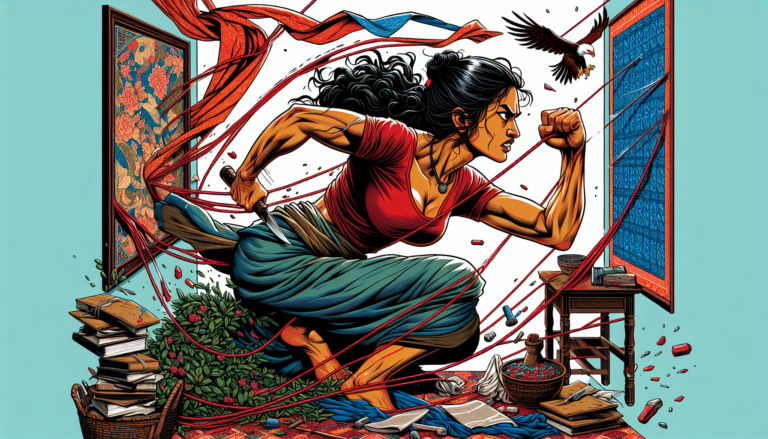The best counter punchers in boxing are masters of timing and precision. Imagine stepping into the ring, your heart pounding, as you face an opponent known for their lightning-fast reflexes and uncanny ability to hit back harder when you least expect it.
That moment when you throw a punch and they catch you off-guard with a swift counter is what separates the greats from the amateurs. I’ve seen it time and again, the way a well-timed counter can turn the tide of a bout.
So, let’s dive into the world of counter punchers, where every move is a calculated risk and the sweet science of boxing shines brightest. Here, we’ll unpack the strategies of the best in the game, giving you the insight to appreciate the finesse of a perfectly executed counter punch.

The Sweet Science of Counterpunching: Mastering the Art of Defense

The Dance of Distance: Staying Out of Reach, Striking When Near
In boxing, distance is your silent guardian. It’s the invisible line that keeps you safe. You learn to feel it, to know when to step back and when to lean in. The best counter punchers dance this line like a tightrope walker. They stay just out of reach, baiting their opponent. Then, in a flash, they strike. It’s a delicate balance, one that requires constant attention and sharp reflexes.
Precision and Efficiency: The One-Two Punch of Counterattacking
Accuracy is not just hitting the target. It’s hitting the right spot at the right time. Counter punchers wait for that split-second opening. They conserve energy, moving only when necessary. Their punches are not wild swings but surgical strikes. Each one is deliberate, intended to exploit the opponent’s weakness. This is the efficiency of a master counter puncher.
Reflexes and Rapid Hands: The Counterpuncher’s Best Friends
Imagine a snake, coiled and ready. It strikes not when it wants, but when the moment is right. That’s how fast your hands must be. Reflexes are your trigger, and speed is your bullet. You train to react, not think. When an opponent’s punch comes, your counter is already on its way. It’s instinct, honed through hours of practice.
The Defensive Stance: Stick, Move, and the Art of Angles
Defense is not just about blocking. It’s about not being there to be hit. You learn to stick and move. Hit, then glide away. Your stance is your fortress, and your movement is the moat. You don’t just step back; you move in angles. You’re never where the opponent expects you to be. Cutting off the ring, you control the space. You dictate the fight.
The Legends of Counterpunching: Learning from the Greats
To understand counterpunching, study the greats. Watch how Muhammad Ali floated, how Floyd Mayweather’s shoulder roll deflected blows. Observe Juan Manuel Marquez’s timing, how he read his opponents. These fighters turned defense into offense. They absorbed punches, only to unleash their own. Their fights are lessons in the sweet science of counterpunching.
In the ring, you’re not just fighting an opponent. You’re battling distance, timing, and reflexes. The best counter punchers know this. They turn defense into an art form. They make the ring their canvas and their opponents unwitting collaborators in their masterpiece. .
Legendary Counterpunchers: Gene Tunney and Roberto Duran

Gene Tunney: The Master of the Long Count Fight
You’ve heard of the Long Count Fight, right? Gene Tunney’s name is synonymous with it. His jab and counterpunching were a spectacle. Picture this: Jack Dempsey, a powerhouse, swinging with all his might. Tunney, the underdog, dodges and lands precise counters. It’s boxing poetry. Tunney’s reign as champion was underrated, but his skills were undeniable. His ability to recognize openings and strike with blinding speed made him a legend.
Roberto Duran’s Iron Fists and Lightning Reflexes
Now, let’s talk about Roberto Duran. His name evokes images of a relentless warrior in the ring. Duran’s counterpunching wasn’t just effective; it was an art form. His footwork? Exceptional. His jabbing and left hook? They were weapons of precision. Duran adapted to his opponents like a chameleon to its environment. He could read their movements, anticipate their strikes, and counter with a force that left fans in awe.
Precision and Adaptability: The Hallmarks of Greatness
In boxing, it’s not just about throwing punches. It’s about landing them where and when they count. Tunney and Duran had this down to a science. They moved with purpose, their feet positioning them for the perfect counter. They didn’t just react; they predicted. They knew their opponents’ next moves before they happened. This wasn’t just fighting; it was chess at lightning speed.
The Counterpuncher’s Creed: Speed and Recognition
To be a great counterpuncher, you need more than just quick hands. You need quick thinking. Tunney and Duran saw the fight unfold in slow motion. They spotted the slightest drop in their opponent’s guard, the tiniest shift in stance. And in that split second, they struck. It was their recognition of these openings that set them apart from the rest.
Footwork: The Dancer’s Edge in a Fighter’s World
Ever watched a boxer and thought they were dancing? That’s because footwork is everything. Tunney and Duran were masters of movement. They didn’t just walk or shuffle; they glided across the canvas. Their feet carried them into range and out of danger with grace. It was this effective foot movement that allowed them to control the fight, dictating the pace and the space.



